Lajim Tower in Mazandaran | Explore Iran’s Historic Landmark
Tourists often fall into two broad categories: those who are drawn to the beauty of nature and those with a keen interest in historical sites and museums. When planning a trip, it's common for groups with mixed interests to struggle in choosing a destination that satisfies everyone.
However, some places, like Lajim Tower in Mazandaran province, offer the perfect blend of both natural beauty and historical significance, making them ideal for diverse groups. In this article, we will explore the unique appeal of Lajim Tower.
The History of Lajim Tower
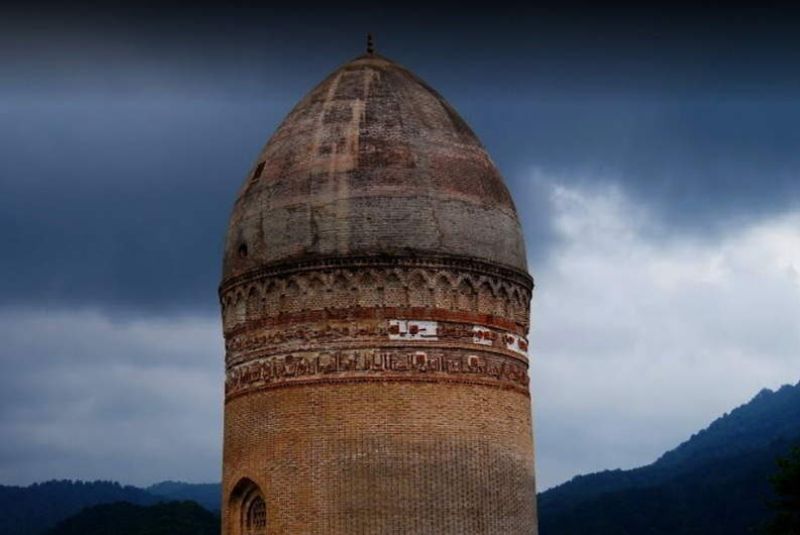
Lajim is a village in the Savadkuh region of Mazandaran province, where the ancient Lajim Tower stands. This tower, over 1,000 years old, dates back to the Sasanian era and is notable for its conical structure.
One of the remarkable features of the tower is an inscription in Kufic script found beneath the roof. Though much of it has deteriorated, the remaining fragments highlight the artistic elegance and value of the script. What sets Lajim Tower apart, similar to the Rasket Tower, is the presence of a Pahlavi inscription alongside the Kufic one. This combination indicates that during the 5th century AH, local rulers in this region of Iran appreciated both pre-Islamic art and the script used during the Sasanian period. The construction of Lajim Tower occurred during the transition between the fall of the first Bavand dynasty and the rise of the second.
At the time of the tower's construction, Tabaristan was under Ziyarid rule, but the Bavandi dynasty maintained control over the mountainous regions. This period, lasting about 70 years, allowed the Bavandis to regain strength and reclaim their lands. By the mid-5th century AH, the Bavand dynasty had established dominance over much of Mazandaran. While the rulers of the Bavand dynasty likely resided in the Alborz mountains near Sari, the exact role of the individual associated with Lajim Tower remains unclear.
For many years, locals believed the tower was the tomb of Imamzadeh Abdullah, a misconception that has since been corrected. Originally, the tower served as a military structure, part of the Bavand rulers' fortifications. However, it later became the burial site for a prominent figure of the Bavand dynasty.
Research conducted by a French archaeologist and architect revealed that Lajim Tower was once part of a larger fortified city. The presence of earthen mounds suggests the area was a stronghold, likely a refuge for a rebel or a deposed emir seeking safety. The circular tower, with its domed interior and conical exterior, reflects the architectural style prevalent in northern Iran.
As for the name "Lajim," some experts believe it originally referred to a marsh or reservoir. However, others argue that it means a large, round bowl, a theory that aligns more closely with the building's appearance. The tower is believed to have been constructed around the same time as the Western Radkan Tower, between 407 and 411 AH.
The Architectural Beauty of Lajim Tower
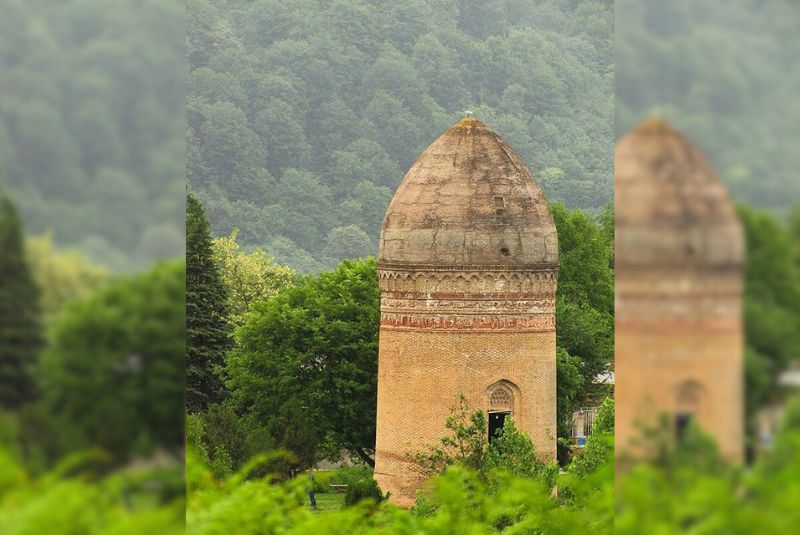
The architectural design of Lajim Tower is immediately distinguished by its conical dome, which appears perfectly circular from the interior. Constructed primarily of bricks, the tower’s entrance is located on the eastern side of the structure. The dome’s base is adorned with several arches, adding to its aesthetic appeal. The tower stands 2,600 meters in height, with an entrance width of approximately 110 cm, and an interior diameter of 550 meters. Alongside bricks, mortar was also used in the construction, reinforcing the circular design inside.
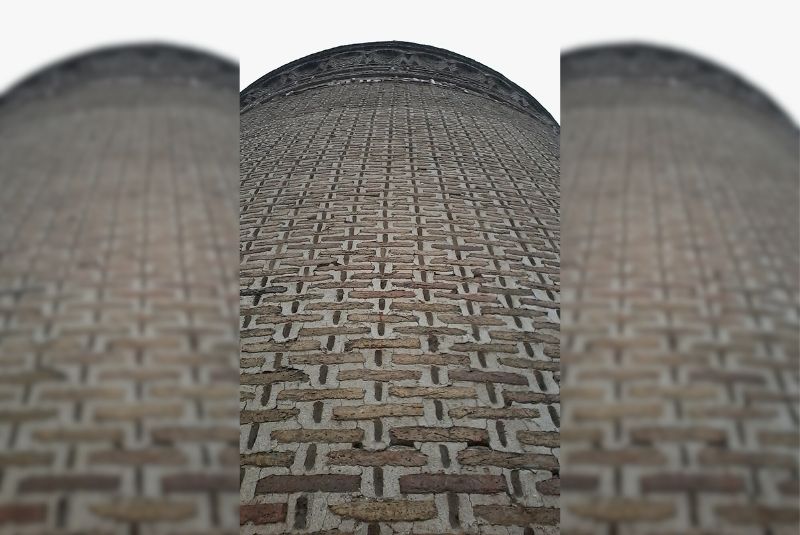
Surrounding the tower, the towering mountains covered in lush vegetation provide a striking backdrop, enhancing the tower’s visual allure.
Lajim Tower Location and Access
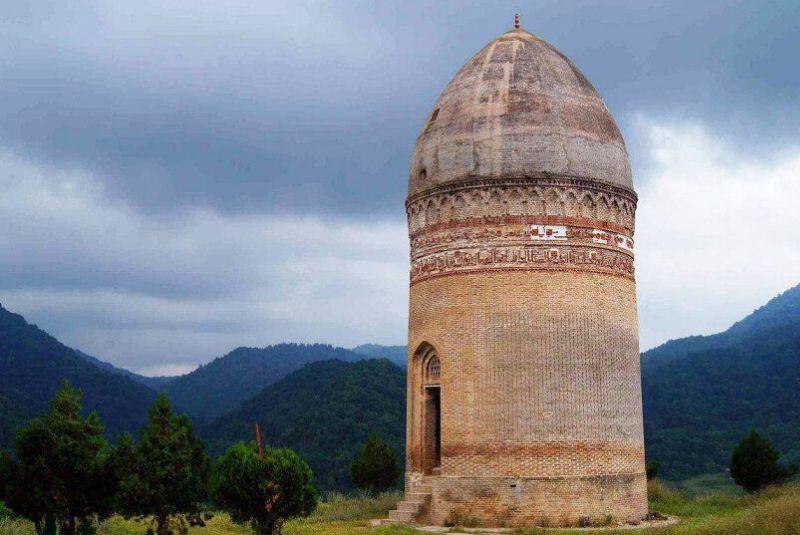
Lajim Tower is a stunning structure situated in the heart of Mazandaran province's lush landscape, near the Savadkuh region. To reach Lajim Tower, visitors can take the Firouzkoh road from Tehran, continuing toward the village of Zirab. From there, Lajim is located 30 kilometers away. As you travel this distance, you will ascend to a higher elevation, offering panoramic views of the surrounding mountains and cliffs. The tower itself is positioned near a steep drop-off, adding to its dramatic setting.
Attractions Near Lajim Tower
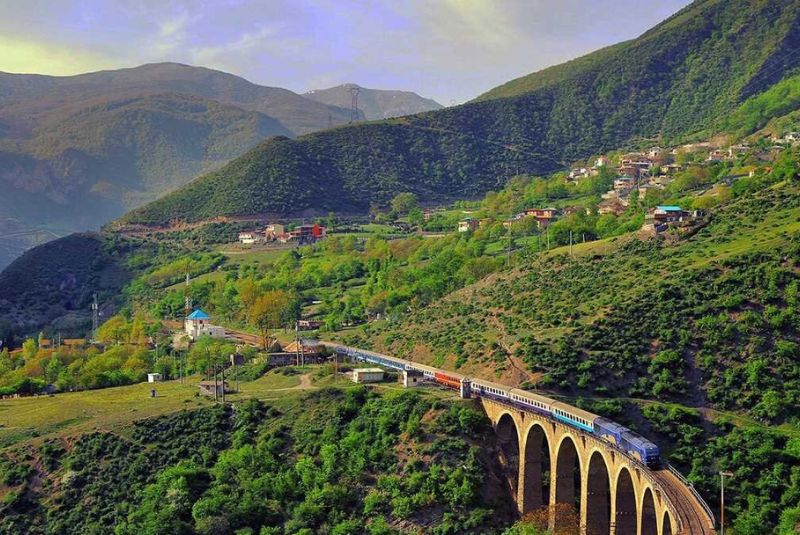
Savadkuh is a region rich in both natural beauty and historical significance, making it an ideal destination for tourists, especially given its proximity to Tehran. One of the most renowned landmarks in the area is the Veresk Bridge, an iconic and historically significant structure that is part of Iran's national railway, connecting the south and center of the country to the north and northeast.
Additionally, the Bavand Tower, which some believe dates back to the Sasanian era, resembles a chess piece and likely served as a watchtower. Nature enthusiasts can explore Shurmast Lake, one of Savadkuh's most popular tourist spots, or visit the Lafour Dam, surrounded by dense forests, and the Tirkan Seven Waterfalls. Other nearby natural attractions include Veresk Waterfall, Gazou Waterfall, Ourim village and its forest, and the Heli Dar forest.
Final Takeaway
Lajim Tower stands as a significant monument of historical importance, worth visiting for its ancient architecture and cultural heritage. When traveling through Iran and exploring Mazandaran Province, make sure to include a visit to Lajim Tower in your itinerary to experience its unique charm and rich historical context firsthand.
Share your story!
Comment below and let us know about your Experience.
Your story inspires others!


Comment
Leave a Comment